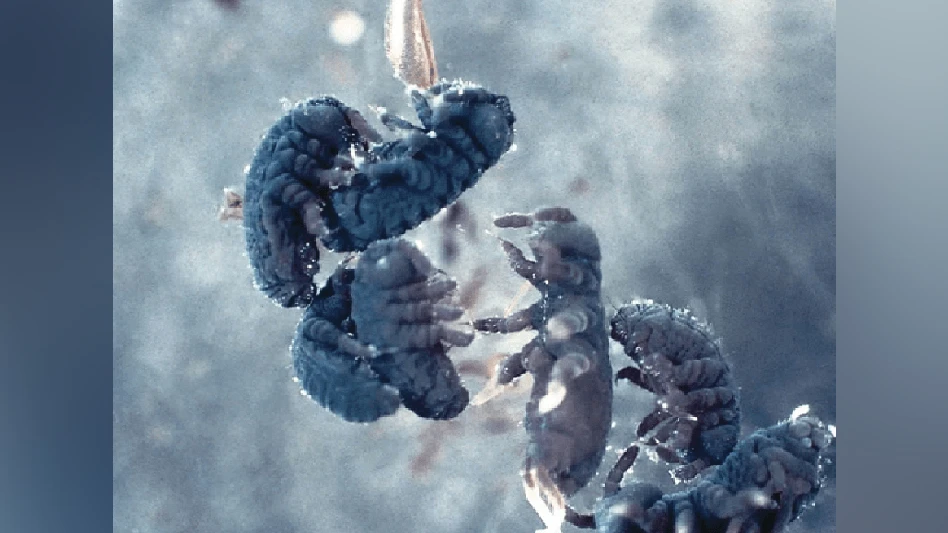It’s that time again. It is the season to don the protective gear and battle stinging insects. Even though stinging insects are part of any warm weather menu of pests, calls to control stinging pests peak in late summer in most areas of North America.
Stinging insect control does come with risk, though. The American Academy of Allergy Asthma and Immunology (AAAI) reports that about 15 percent of adults in the United States have mild reactions to insect stings, while major reactions can occur in about 3 percent of adults and 1 percent of children. Some have just a slight irritation, which can be treated at home. For some people, though, stings can be fatal. AAAI reports that about 40 deaths occur each year due to insect stings.
Public relations releases in our industry claim that more than 500,000 people go to the emergency room each year due to insect stings. A study conducted at Massachusetts General Hospital showed that of the insect sting emergencies evaluated during one period of time, 58 percent of the patients had mild local reactions, 11 percent had mild system reactions (more serious than just a skin reaction) and 31 percent had varying degrees of anaphylactic reactions. Anaphylactic reactions can lead to death. Consumers are aware of the dangers, which is why they depend on us to manage these pests.
INDUSTRY IMPLICATIONS. The danger can be just as real for pest management professionals. A small percentage of technicians conducting service work might react to stings. They might not even know that they are in a high-risk group until stung. All too frequently, we hear of serious reactions or worse for those who perform stinging insect service work. A little planning will help reduce the chances of these potential tragedies.
Naturally, anyone who has a known reaction to stings must take special precautions if they work near stinging insects. Some will carry an EpiPen (epinephrine) because of a known reaction. While common sense would dictate that the highly sensitive should avoid stinging insect work, a technician can be exposed to stinging insects when performing perimeter pest control, carpenter ant work or even wildlife control in attics.
Protective gear, such as a bee veil and a bee suit, should be available for use by any technician engaged in stinging insect control work. It is also a good idea for any technician who might encounter stinging insects to have access to personal protection on the vehicle as well, even if they are not doing stinging insect control work.
There are some great tools for stinging insect control. Many companies prefer using a bee pole. With several designs available, bee poles are extension poles with the business end fitted for an aerosol can of insect control product. This allows application of the product from a safe distance or from the ground. Some poles have a chamber where dust can be added. Remember though that few dust products have instant control of products of years past. Many of today’s dusts being marketed for stinging insect control will take minutes to hours to control the pests. Keep informed on the latest control products to achieve optimum success for your company’s program. Train technicians on the proper use of any tools. Also remember gravity. Even when staying safely on the ground, affected stinging insects may fall into the "safe" area.
If there is a need to use a ladder, ensure that the ladder is in good working order. By late summer, sometimes ladders can show signs of wear and they should be maintained. Use of a faulty ladder can be very dangerous. Shortcuts when using a ladder should not be tolerated.
Besides being maintained, ladders should be leveled when in use. Safety must be the most important consideration for the technician and the customer. All safety tools must be used per company standards. Stinging insect control is not for amateurs.
BEE PREPARED. Before peak stinging insect season, conduct a stinging insect refresher at a service meeting. Provide a handout of the most common stinging insects of your area. Materials should cover proper identification, habits, company control methods, safety precautions and emergency response (including first aid). It is also important to prepare the technician for what to do after hours in case of an emergency. Remind technicians to follow all regulations and labels when performing this work.
An added benefit of this refresher is that the technician will be prepared to answer consumers’ questions prior to servicing the account. The industry today sells knowledge rather than products and this is one service where the technician can shine as the expert.
Stinging insect control can be difficult but at the same time, it can be very beneficial even beyond profitability. Most homeowners won’t climb a ladder to get to the stinging insects. This service spotlights the value of the service to the consumer and if we are prepared, profits will follow.
Greg Baumann is a technical services director with Orkin (www.orkin.com) and has more than 30 years of varied pest management experience. Learn more via Facebook at www.facebook.com/OrkinPestControl or join the conversation at www.twitter.com/AskTheOrkinMan.

Explore the July 2011 Issue
Check out more from this issue and find your next story to read.
Latest from Pest Control Technology
- Massey Services Gives Back to Several Organizations Over Holiday Season
- The Power of Clarity at Work: How Goals, Roles and Tasks Transform Teams
- Unusual Pests of New Homes
- 2024 Crown Leadership Award Winner Bill Welsh
- UC Riverside Scientists Study New Termite Treatment Methods
- Lindsay Hartnett Honored with First Annual Eco Serve HEARTS Award
- 10 Tips to Prevent Freeze Damage
- Island Conservation Unveils New Branding and Website to Support Global Island Restoration





